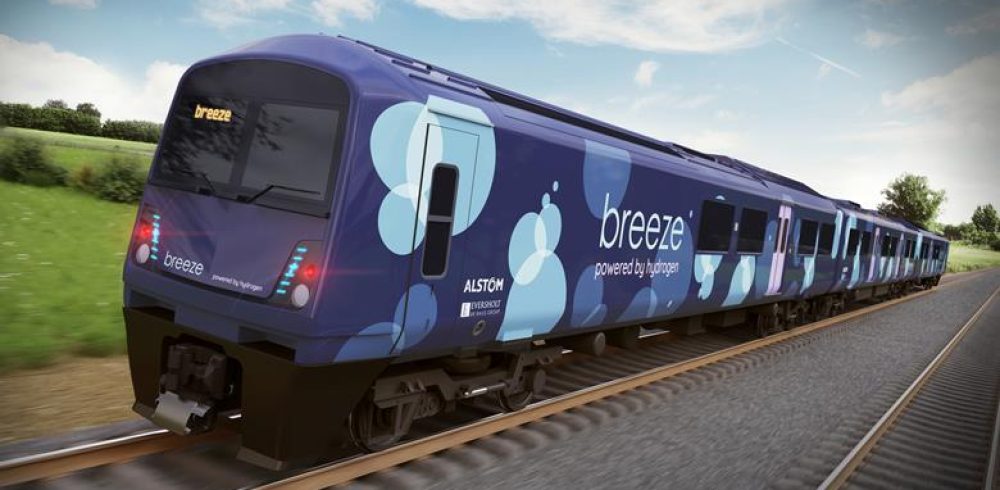Rail manufacturer Alstom revealed its plans to bring hydrogen trains to the UK by 2022. The ‘Breeze’ train will be a conversion of existing Class 321 trains, re-engineering some of the country’s most reliable rolling stock in order to create a clean train to fit the modern age.
The conversion will be carried out by Alstom, in partnership with Eversholt Rail. The companies have already confirmed that their initial, comprehensive engineering study is now complete and the train design concept is finalised.
First to allow a hydrogen train to fit within the standard UK loading gauge, the innovative technical solution will also create more space for passengers than the trains that will be replaced.
“The Breeze will be a clean, new train for the UK with stylish, modern look,” said Nick Crossfield, Alstom UK & Ireland Managing Director. “The railways need to decarbonise and the government has rightly set out a goal to eliminate diesel rolling stock by 2040.”
“H2 trains offer an ideal solution for routes which are unlikely to benefit from electrification, and our innovative engineering solution means they can now fit within the UK loading gauge and can quickly be ready to roll on Britain’s railways,” Mr Crossfield added.
Andrew Jones MP, the UK Rail Minister, also commented on the news, mentioning that this new technology has the potential to transform railways by cutting CO2 emissions and therefore making journeys cleaner and greener.
UK Minister for Energy and Clean Growth Claire Perry MP added:
“Transport in the UK has evolved over centuries from the world’s first steam train to the tens of thousands of electric vehicles on our roads today thanks to our nation of innovators.”
“This new H2-powered train, which will only emit water, is further proof of the UK’s continued creativity to transform the way we travel as we continue to move to a greener, cleaner economy. The UK is on track when it comes to growing a world-leading H2 economy, and through our modern Industrial Strategy we are providing £23 million to power our ambition to be the ‘go-to’ place for first-class H2 transport,” she concluded.









